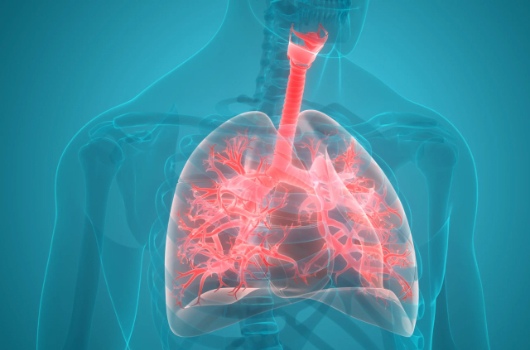Clinical Study
Differences in Common Diarrheal Disease Pathogens for Children and Adults

Dr. Janie French • June 9, 2025
According to the CDC, acute diarrhea is the cause of over 1.5 million outpatient visits and 200,000 hospitalizations per year for children in the United States. Globally, there are an estimated 2 million deaths per year due to diarrheal illness in children less than five years of age.1 While certain pathogens are detected in patients of all ages, common causes of diarrheal illness can differ between adults and pediatric patients.
This article explores how pathogen prevalence differs for adults and children with infectious diarrhea and diagnostic guidelines.
Commonalities
Many pathogens are detected in patients of all ages, with contaminated food exposure being one of the most critical risk factors for developing illness.
- In the United States, Norovirus is the leading cause of vomiting and diarrhea.2 Repeat illness throughout life is common due to the many different subtypes of norovirus.2
- Foodborne illness from Salmonella and Campylobacter infections is the most common bacterial cause of infection in all patients.3 Children younger than five, elderly people, and immunocompromised people are at the most significant risk of developing severe illness.4
Differences
There can be some differences in pathogen detection rates for pediatric and adult patients due to differences in colonization, immune development, and exposure.
- In general, viral causes of gastroenteritis are more common in children, with studies showing increased prevalence of rotavirus, astrovirus, and adenovirus in children compared to adults.5
- Rotavirus has classically been associated with severe symptoms in children under age 5, sometimes causing death. The adoption of the rotavirus vaccine dramatically reduced morbidity and mortality, with an estimated 45,000 hospitalizations between 2007 and 2011 being avoided in children under five in the U.S. due to routine vaccination.6, 7
- Clostridioides difficile (C. diff) infection is more common in adults, with age over 65 as a primary risk factor. The Infectious Disease Society of America (IDSA) and the Society for Healthcare Epidemiology of America (SHEA) recommend never testing infants under 12 months of age due to high carriage rates of C. diff. Testing is also not routinely recommended for children 1-2 years of age until other causes have been excluded.8
HealthTrackRx Data
- Of the pathogens discussed here, Norovirus was detected the most often, ranging from 3.5% to 9.7% positivity.
- Similarly, Salmonella and Campylobacter infections had minimal variation in positivity rates across all age groups. Salmonella positivity varied between 1.4% to 3.8%, and Campylobacter positivity varied from 2.2% to 4.6%.
- For astrovirus, rotavirus, and adenovirus, there was a marked increase in positivity for patients less than 15 years of age compared to other age groups.
Diagnosis of Infectious Diarrhea
The 2017 IDSA guidelines for the diagnosis and management of infectious diarrhea recommend:
- People with fever or bloody diarrhea should be evaluated for enteropathogens for which antimicrobial agents may benefit the patient.9
- Patients with fever should be considered for enteric fever if they have possible exposures to Salmonella.9
- A broad set of bacterial, viral, and parasitic testing should be considered for immunocompromised patients or those potentially involved in an outbreak.9
For patients with gastroenteritis concerns, clinical laboratories have several options for methodologies. Bacterial pathogens like Campylobacter, Salmonella, and Vibrio can be detected through traditional methods like culture or culture-independent methods such as syndromic panel PCR. However, PCR is the primary detection method for viral pathogens like norovirus. Many clinical laboratories utilize syndromic panel PCR to test enteric pathogens, regardless of type.3
References
- King CK, Glass R, Bresee JS, Duggan C; Centers for Disease Control and Prevention. Managing acute gastroenteritis among children: oral rehydration, maintenance, and nutritional therapy. MMWR Recomm Rep. 2003 Nov 21;52(RR-16):1-16. PMID: 14627948.
- Centers for Disease Control and Prevention (CDC). About Norovirus. Atlanta, Georgia: U.S. Department of Health and Human Services. https://www.cdc.gov/norovirus/about/index.html. Accessed 05/09/2025.
- Centers for Disease Control and Prevention (CDC). FoodNet Fast: Pathogen Surveillance Tool. Atlanta, Georgia: U.S. Department of Health and Human Services. http://wwwn.cdc.gov/foodnetfast. Accessed 05/09/2025.
- U.S. Food and Drug Administration. Salmonella (salmonellosis). https://www.fda.gov/food/foodborne-pathogens/salmonella-salmonellosis
- Wang X, Wang J, Sun H, Xia S, Duan R, Liang J, Xiao Y, Qiu H, Shan G, Jing H. Etiology of Childhood Infectious Diarrhea in a Developed Region of China: Compared to Childhood Diarrhea in a Developing Region and Adult Diarrhea in a Developed Region. PLoS One. 2015 Nov 3;10(11):e0142136. doi: 10.1371/journal.pone.0142136. PMID: 26528820; PMCID: PMC4631449.
- Centers for Disease Control and Prevention. Epidemiology and Prevention of Vaccine-Preventable Diseases. Chapter 19: Rotavirus. Hall E., Wodi A.P., Hamborsky J., et al., eds. 14th ed. Washington, D.C. Public Health Foundation, 2021.
- Baker JM, Tate JE, Steiner CA, Haber MJ, Parashar UD, Lopman BA. Longer-term Direct and Indirect Effects of Infant Rotavirus Vaccination Across All Ages in the United States in 2000-2013: Analysis of a Large Hospital Discharge Data Set. Clin Infect Dis. 2019 Mar 5;68(6):976-983. doi: 10.1093/cid/ciy580. PMID: 30020438; PMCID: PMC7182126.
- McDonald LC, Gerding DN, Johnson S, Bakken JS, Carroll KC, Coffin SE, Dubberke ER, Garey KW, Gould CV, Kelly C, Loo V, Shaklee Sammons J, Sandora TJ, Wilcox MH. Clinical Practice Guidelines for Clostridium difficile Infection in Adults and Children: 2017 Update by the Infectious Diseases Society of America (IDSA) and Society for Healthcare Epidemiology of America (SHEA). Clin Infect Dis. 2018 Mar 19;66(7):e1-e48. doi: 10.1093/cid/cix1085. PMID: 29462280; PMCID: PMC6018983.
- Shane AL, Mody RK, Crump JA, Tarr PI, Steiner TS, Kotloff K, Langley JM, Wanke C, Warren CA, Cheng AC, Cantey J, Pickering LK. 2017 Infectious Diseases Society of America Clinical Practice Guidelines for the Diagnosis and Management of Infectious Diarrhea. Clin Infect Dis. 2017 Nov 29;65(12):e45-e80. doi: 10.1093/cid/cix669. PMID: 29053792; PMCID: PMC5850553.
References
- King CK, Glass R, Bresee JS, Duggan C; Centers for Disease Control and Prevention. Managing acute gastroenteritis among children: oral rehydration, maintenance, and nutritional therapy. MMWR Recomm Rep. 2003 Nov 21;52(RR-16):1-16. PMID: 14627948.
- Centers for Disease Control and Prevention (CDC). About Norovirus. Atlanta, Georgia: U.S. Department of Health and Human Services. https://www.cdc.gov/norovirus/about/index.html. Accessed 05/09/2025.
- Centers for Disease Control and Prevention (CDC). FoodNet Fast: Pathogen Surveillance Tool. Atlanta, Georgia: U.S. Department of Health and Human Services. http://wwwn.cdc.gov/foodnetfast. Accessed 05/09/2025.
- U.S. Food and Drug Administration. Salmonella (salmonellosis). https://www.fda.gov/food/foodborne-pathogens/salmonella-salmonellosis
- Wang X, Wang J, Sun H, Xia S, Duan R, Liang J, Xiao Y, Qiu H, Shan G, Jing H. Etiology of Childhood Infectious Diarrhea in a Developed Region of China: Compared to Childhood Diarrhea in a Developing Region and Adult Diarrhea in a Developed Region. PLoS One. 2015 Nov 3;10(11):e0142136. doi: 10.1371/journal.pone.0142136. PMID: 26528820; PMCID: PMC4631449.
- Centers for Disease Control and Prevention. Epidemiology and Prevention of Vaccine-Preventable Diseases. Chapter 19: Rotavirus. Hall E., Wodi A.P., Hamborsky J., et al., eds. 14th ed. Washington, D.C. Public Health Foundation, 2021.
- Baker JM, Tate JE, Steiner CA, Haber MJ, Parashar UD, Lopman BA. Longer-term Direct and Indirect Effects of Infant Rotavirus Vaccination Across All Ages in the United States in 2000-2013: Analysis of a Large Hospital Discharge Data Set. Clin Infect Dis. 2019 Mar 5;68(6):976-983. doi: 10.1093/cid/ciy580. PMID: 30020438; PMCID: PMC7182126.
- McDonald LC, Gerding DN, Johnson S, Bakken JS, Carroll KC, Coffin SE, Dubberke ER, Garey KW, Gould CV, Kelly C, Loo V, Shaklee Sammons J, Sandora TJ, Wilcox MH. Clinical Practice Guidelines for Clostridium difficile Infection in Adults and Children: 2017 Update by the Infectious Diseases Society of America (IDSA) and Society for Healthcare Epidemiology of America (SHEA). Clin Infect Dis. 2018 Mar 19;66(7):e1-e48. doi: 10.1093/cid/cix1085. PMID: 29462280; PMCID: PMC6018983.
- Shane AL, Mody RK, Crump JA, Tarr PI, Steiner TS, Kotloff K, Langley JM, Wanke C, Warren CA, Cheng AC, Cantey J, Pickering LK. 2017 Infectious Diseases Society of America Clinical Practice Guidelines for the Diagnosis and Management of Infectious Diarrhea. Clin Infect Dis. 2017 Nov 29;65(12):e45-e80. doi: 10.1093/cid/cix669. PMID: 29053792; PMCID: PMC5850553.
Related Articles and White papers

Dr. Janie French • June 9, 2025
According to the CDC, acute diarrhea is the cause of over 1.5 million outpatient visits and 200,000 hospitalizations per year for children in the United States. Globally, there are an estimated 2 million deaths per year due to diarrheal illness in children less than five years of age.1 While certain pathogens are detected in patients of all ages, common causes of diarrheal illness can differ between adults and pediatric patients.
This article explores how pathogen prevalence differs for adults and children with infectious diarrhea and diagnostic guidelines.
Commonalities
Many pathogens are detected in patients of all ages, with contaminated food exposure being one of the most critical risk factors for developing illness.
- In the United States, Norovirus is the leading cause of vomiting and diarrhea.2 Repeat illness throughout life is common due to the many different subtypes of norovirus.2
- Foodborne illness from Salmonella and Campylobacter infections is the most common bacterial cause of infection in all patients.3 Children younger than five, elderly people, and immunocompromised people are at the most significant risk of developing severe illness.4
Differences
There can be some differences in pathogen detection rates for pediatric and adult patients due to differences in colonization, immune development, and exposure.
- In general, viral causes of gastroenteritis are more common in children, with studies showing increased prevalence of rotavirus, astrovirus, and adenovirus in children compared to adults.5
- Rotavirus has classically been associated with severe symptoms in children under age 5, sometimes causing death. The adoption of the rotavirus vaccine dramatically reduced morbidity and mortality, with an estimated 45,000 hospitalizations between 2007 and 2011 being avoided in children under five in the U.S. due to routine vaccination.6, 7
- Clostridioides difficile (C. diff) infection is more common in adults, with age over 65 as a primary risk factor. The Infectious Disease Society of America (IDSA) and the Society for Healthcare Epidemiology of America (SHEA) recommend never testing infants under 12 months of age due to high carriage rates of C. diff. Testing is also not routinely recommended for children 1-2 years of age until other causes have been excluded.8
HealthTrackRx Data
- Of the pathogens discussed here, Norovirus was detected the most often, ranging from 3.5% to 9.7% positivity.
- Similarly, Salmonella and Campylobacter infections had minimal variation in positivity rates across all age groups. Salmonella positivity varied between 1.4% to 3.8%, and Campylobacter positivity varied from 2.2% to 4.6%.
- For astrovirus, rotavirus, and adenovirus, there was a marked increase in positivity for patients less than 15 years of age compared to other age groups.
Diagnosis of Infectious Diarrhea
The 2017 IDSA guidelines for the diagnosis and management of infectious diarrhea recommend:
- People with fever or bloody diarrhea should be evaluated for enteropathogens for which antimicrobial agents may benefit the patient.9
- Patients with fever should be considered for enteric fever if they have possible exposures to Salmonella.9
- A broad set of bacterial, viral, and parasitic testing should be considered for immunocompromised patients or those potentially involved in an outbreak.9
For patients with gastroenteritis concerns, clinical laboratories have several options for methodologies. Bacterial pathogens like Campylobacter, Salmonella, and Vibrio can be detected through traditional methods like culture or culture-independent methods such as syndromic panel PCR. However, PCR is the primary detection method for viral pathogens like norovirus. Many clinical laboratories utilize syndromic panel PCR to test enteric pathogens, regardless of type.3
References
- King CK, Glass R, Bresee JS, Duggan C; Centers for Disease Control and Prevention. Managing acute gastroenteritis among children: oral rehydration, maintenance, and nutritional therapy. MMWR Recomm Rep. 2003 Nov 21;52(RR-16):1-16. PMID: 14627948.
- Centers for Disease Control and Prevention (CDC). About Norovirus. Atlanta, Georgia: U.S. Department of Health and Human Services. https://www.cdc.gov/norovirus/about/index.html. Accessed 05/09/2025.
- Centers for Disease Control and Prevention (CDC). FoodNet Fast: Pathogen Surveillance Tool. Atlanta, Georgia: U.S. Department of Health and Human Services. http://wwwn.cdc.gov/foodnetfast. Accessed 05/09/2025.
- U.S. Food and Drug Administration. Salmonella (salmonellosis). https://www.fda.gov/food/foodborne-pathogens/salmonella-salmonellosis
- Wang X, Wang J, Sun H, Xia S, Duan R, Liang J, Xiao Y, Qiu H, Shan G, Jing H. Etiology of Childhood Infectious Diarrhea in a Developed Region of China: Compared to Childhood Diarrhea in a Developing Region and Adult Diarrhea in a Developed Region. PLoS One. 2015 Nov 3;10(11):e0142136. doi: 10.1371/journal.pone.0142136. PMID: 26528820; PMCID: PMC4631449.
- Centers for Disease Control and Prevention. Epidemiology and Prevention of Vaccine-Preventable Diseases. Chapter 19: Rotavirus. Hall E., Wodi A.P., Hamborsky J., et al., eds. 14th ed. Washington, D.C. Public Health Foundation, 2021.
- Baker JM, Tate JE, Steiner CA, Haber MJ, Parashar UD, Lopman BA. Longer-term Direct and Indirect Effects of Infant Rotavirus Vaccination Across All Ages in the United States in 2000-2013: Analysis of a Large Hospital Discharge Data Set. Clin Infect Dis. 2019 Mar 5;68(6):976-983. doi: 10.1093/cid/ciy580. PMID: 30020438; PMCID: PMC7182126.
- McDonald LC, Gerding DN, Johnson S, Bakken JS, Carroll KC, Coffin SE, Dubberke ER, Garey KW, Gould CV, Kelly C, Loo V, Shaklee Sammons J, Sandora TJ, Wilcox MH. Clinical Practice Guidelines for Clostridium difficile Infection in Adults and Children: 2017 Update by the Infectious Diseases Society of America (IDSA) and Society for Healthcare Epidemiology of America (SHEA). Clin Infect Dis. 2018 Mar 19;66(7):e1-e48. doi: 10.1093/cid/cix1085. PMID: 29462280; PMCID: PMC6018983.
- Shane AL, Mody RK, Crump JA, Tarr PI, Steiner TS, Kotloff K, Langley JM, Wanke C, Warren CA, Cheng AC, Cantey J, Pickering LK. 2017 Infectious Diseases Society of America Clinical Practice Guidelines for the Diagnosis and Management of Infectious Diarrhea. Clin Infect Dis. 2017 Nov 29;65(12):e45-e80. doi: 10.1093/cid/cix669. PMID: 29053792; PMCID: PMC5850553.
References
- King CK, Glass R, Bresee JS, Duggan C; Centers for Disease Control and Prevention. Managing acute gastroenteritis among children: oral rehydration, maintenance, and nutritional therapy. MMWR Recomm Rep. 2003 Nov 21;52(RR-16):1-16. PMID: 14627948.
- Centers for Disease Control and Prevention (CDC). About Norovirus. Atlanta, Georgia: U.S. Department of Health and Human Services. https://www.cdc.gov/norovirus/about/index.html. Accessed 05/09/2025.
- Centers for Disease Control and Prevention (CDC). FoodNet Fast: Pathogen Surveillance Tool. Atlanta, Georgia: U.S. Department of Health and Human Services. http://wwwn.cdc.gov/foodnetfast. Accessed 05/09/2025.
- U.S. Food and Drug Administration. Salmonella (salmonellosis). https://www.fda.gov/food/foodborne-pathogens/salmonella-salmonellosis
- Wang X, Wang J, Sun H, Xia S, Duan R, Liang J, Xiao Y, Qiu H, Shan G, Jing H. Etiology of Childhood Infectious Diarrhea in a Developed Region of China: Compared to Childhood Diarrhea in a Developing Region and Adult Diarrhea in a Developed Region. PLoS One. 2015 Nov 3;10(11):e0142136. doi: 10.1371/journal.pone.0142136. PMID: 26528820; PMCID: PMC4631449.
- Centers for Disease Control and Prevention. Epidemiology and Prevention of Vaccine-Preventable Diseases. Chapter 19: Rotavirus. Hall E., Wodi A.P., Hamborsky J., et al., eds. 14th ed. Washington, D.C. Public Health Foundation, 2021.
- Baker JM, Tate JE, Steiner CA, Haber MJ, Parashar UD, Lopman BA. Longer-term Direct and Indirect Effects of Infant Rotavirus Vaccination Across All Ages in the United States in 2000-2013: Analysis of a Large Hospital Discharge Data Set. Clin Infect Dis. 2019 Mar 5;68(6):976-983. doi: 10.1093/cid/ciy580. PMID: 30020438; PMCID: PMC7182126.
- McDonald LC, Gerding DN, Johnson S, Bakken JS, Carroll KC, Coffin SE, Dubberke ER, Garey KW, Gould CV, Kelly C, Loo V, Shaklee Sammons J, Sandora TJ, Wilcox MH. Clinical Practice Guidelines for Clostridium difficile Infection in Adults and Children: 2017 Update by the Infectious Diseases Society of America (IDSA) and Society for Healthcare Epidemiology of America (SHEA). Clin Infect Dis. 2018 Mar 19;66(7):e1-e48. doi: 10.1093/cid/cix1085. PMID: 29462280; PMCID: PMC6018983.
- Shane AL, Mody RK, Crump JA, Tarr PI, Steiner TS, Kotloff K, Langley JM, Wanke C, Warren CA, Cheng AC, Cantey J, Pickering LK. 2017 Infectious Diseases Society of America Clinical Practice Guidelines for the Diagnosis and Management of Infectious Diarrhea. Clin Infect Dis. 2017 Nov 29;65(12):e45-e80. doi: 10.1093/cid/cix669. PMID: 29053792; PMCID: PMC5850553.





